#australia wildfires
Link
Excerpt from this Washington Post story:
Australia’s fire season in late 2019 and early 2020 was extreme. It blew smoke some 20 miles into the sky, not unlike what a nuclear blast might cause. Smoke from the fires circled the globe and hovered in plumes over the Pacific.
Now, a study published Thursday in the journal Scientific Reports suggests the smoky aerosols caused the highest temperatures in the stratosphere in about three decades and probably damaged the ozone layer — which has been slowly recovering since the substances that deplete it were largely phased out through the 1987 Montreal Protocol.
The stratosphere, just above where airplanes fly, doesn’t normally vary much in temperature because of events on the Earth’s surface — with the exception of volcanic eruptions.
But a sudden and unexpected warming of the global stratosphere was detected in the first few months of 2020 — reaching up to 3 degrees Celsius (5.4 degrees Fahrenheit) around Australia and about 0.7 degrees Celsius (1.26 degrees Fahrenheit) globally. The researchers say it was the highest temperature recorded in the stratosphere since Mount Pinatubo erupted in the Philippines in 1991, sending aerosols from sulfate and smoke high into the air.
Lilly Damany-Pearce, a researcher at England’s University of Exeter who led the study, said that both the stratospheric warming and a sizable ozone hole that spread over most of the Antarctic continent in 2020 were likely to have been caused by the violent fire-induced thunderclouds, or “pyrocumulonimbus” events, which injected enormous plumes of smoke into the lower stratosphere.
She said smoke particles are about 50 times more efficient at absorbing sunlight than volcanic sulfate particles — because of the black soot in smoke aerosols. Sunlight heats the air containing the smoke particles, causing this smoke-laden air to rise in a process similar to that which causes hot-air balloons to rise.
Once the particles are in the stratosphere, the researchers said, continued heating can cause changes in ozone through changes in atmospheric circulation, and chemical reactions on the surface of the smoke particles can deplete the ozone layer.
34 notes
·
View notes
Text
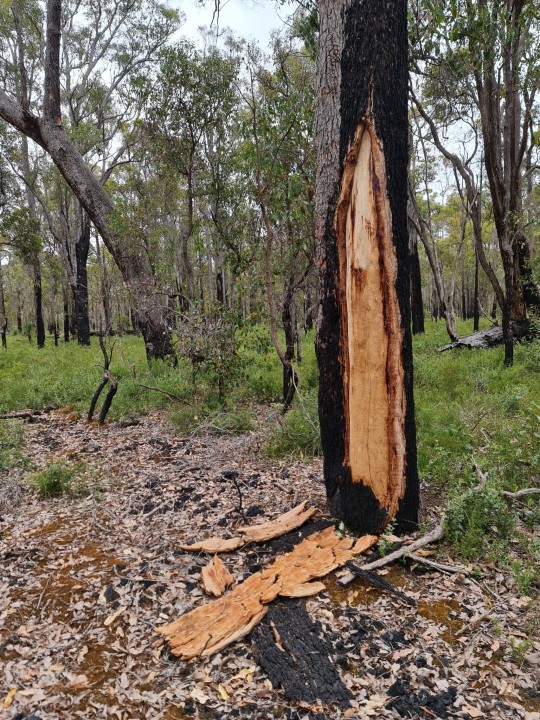
The beginning of a blackbutt hollow on a marri tree (Corymbia calophylla).
When fire burns severely it can sometimes 'kill' the bark, even on hardy fire-adapted Eucalypts. This causes a loss of integrity and will fall away, like we can see here. Now the trunk is exposed without bark on this side. The tree will generate another bark layer, but until it does, it will be subject to insect attack and other issues.
These blackbutts are now more susceptible to damage from fire. Over the years as repeated fires effect the area, the hollow will become bigger, and fire can get 'into' the tree rather than just burning the bark, and they can burn from the inside out. We call these trees "chimneys." You will see what looks to be a normal, un-burnt tree, but it's billowing smoke out the top - because it's burning internally.
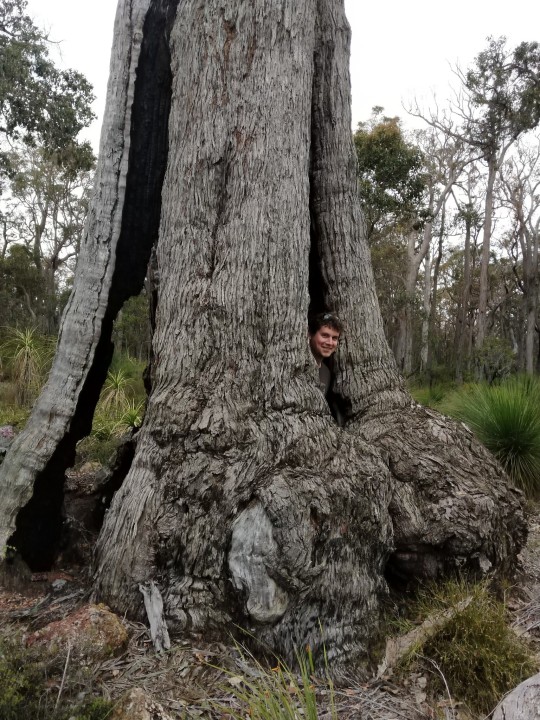
This is a giant marri blackbutt is completely burned out underneath (6'3" friend for scale)!
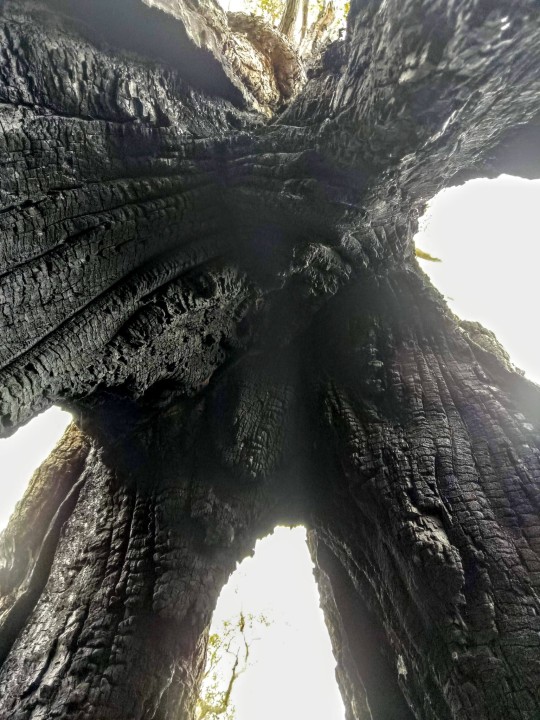
From beneath. By the way, this tree is still alive!
📸 @fire-ecology
#fire#fire ecology#plants#botany#plant science#ecology#wildfire#australia#bushfire#op#eucalyptus#eucalypt
185 notes
·
View notes
Text
Stay safe, folks.
55 notes
·
View notes
Photo
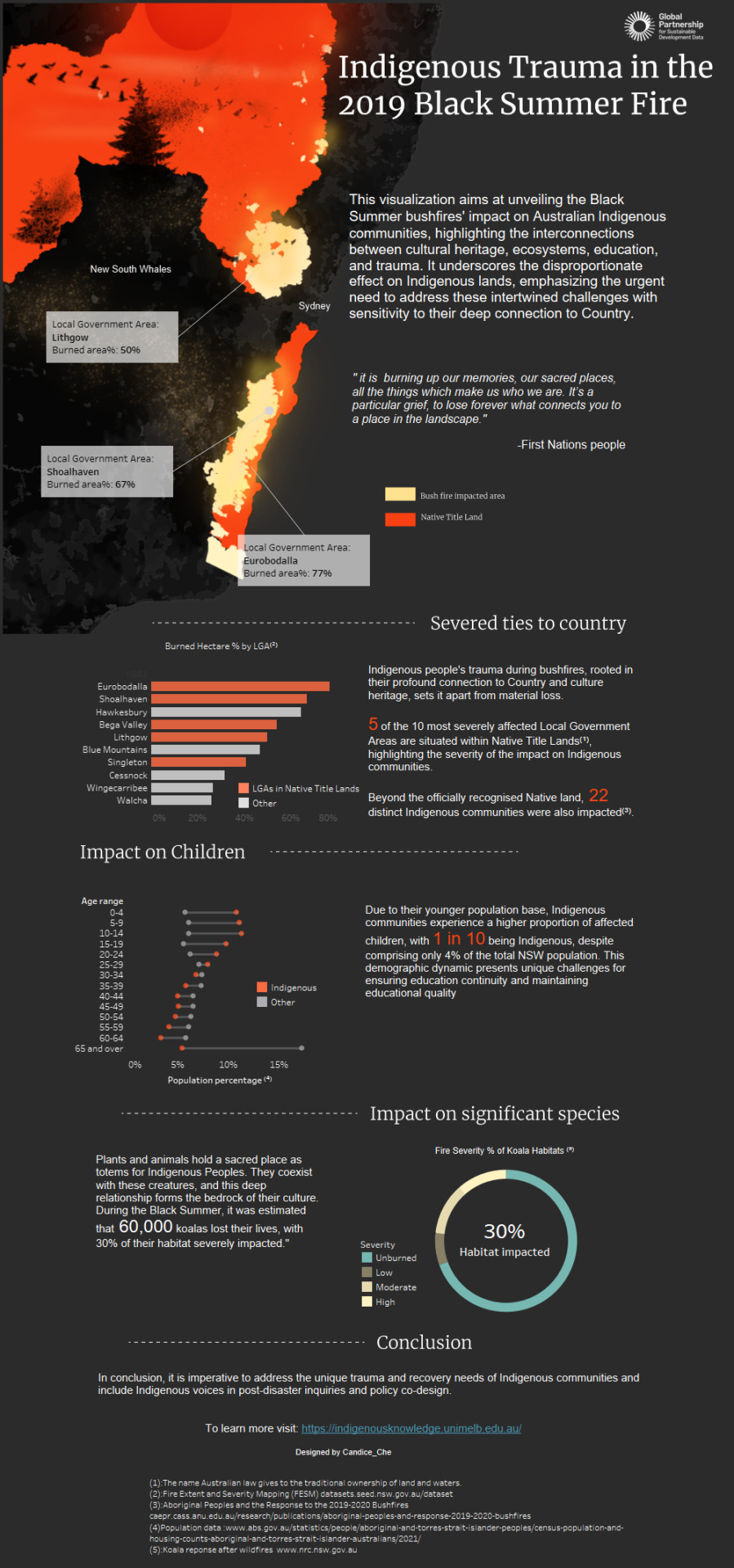
Indigenous Trauma in 2019 Black Summer Fire
by u/Away-Pepper-9239
Data sources
(1):The name Australian law gives to the traditional ownership of land and waters.
(2):Fire Extent and Severity Mapping (FESM) datasets.seed.nsw.gov.au/dataset
(3):Aboriginal Peoples and the Response to the 2019-2020 Bushfires caepr.cass.anu.edu.au/research/publications/aboriginal-peoples-and-response-2019-2020-bushfires
(4)Population data :www.abs.gov.au/statistics/people/aboriginal-and-torres-strait-islander-peoples/census-population-and-housing-counts-aboriginal-and-torres-strait-islander-australians/2021/
(5):Koala reponse after wildfires www.nrc.nsw.gov.au
92 notes
·
View notes
Text
I asked this question to my science class during my wildfire fixation, and I’m curious to see what people say here. I’ve read a few books about them and always found it interesting how California and her associated firefighting agency are listed on the same par with countries.
38 notes
·
View notes
Text
Given the fact that we are only just in Spring now, its only 28°C and I walked outside and saw the smoke in the atmosphere I am really not looking forward when it hits summer. I have watched the rest of the fires devastate the rest of the world and I am really scared for this summer. Although there were only a few small fires or grass fires today, given all the La Niña’s and El Niño’s we have had, I am worried.
#Australia#fires#bushfires#wildfires#climate change#Straya#weather#Australian fires#summer 2023/2024#heat#nsw#new south wales#Sydney#Melbourne#Victoria#Queensland#tasmania#northern territory#south australia#western australia#Perth#adelaide#australian capital territory#brisbane#Canberra#auspol
46 notes
·
View notes
Text
Interesting how you people cared more about the wildfires in Australia than the ones in Canada. Like people are risking their lives to combat the fires, have lost their homes, and millions of acres of land has been destroyed and all you pricks can think about is how "aesthetic" the skies in New York are and somehow finding a way to blame Canada like we purposefully set our own country on fire.
#wildfires#literally all the news about the fires is solely focused on the US#i don't give a shit#sorrry not sorry you people showed more sympathy to autralia and now you couldn't give two shits about Canada#australia deserved the help but so do we#yes im bitter and upset#im not apologizing for that#idk the way this situation is being talked about is so fucked up#like the actual people being impacted by these fires are being forgotten#fuck you all#venting
20 notes
·
View notes
Text

This is when you are driving on a Sicilian highway in Italy and the radio says the Minister of infrastructures is following closely the situation.
#sicilia
#sicilian#sicily#wildfires#mediterranean#algeria#tunisia#italy#greece#firestorm#fires#fire#ausgov#politas#auspol#tasgov#taspol#neoliberal capitalism#australia#fuck neoliberals#anthony albanese#albanese government
10 notes
·
View notes
Text
The aerosol fallout from wildfires that burned across more than 70,000 square miles of Australia in 2019 and 2020 was so persistent and widespread that it brightened a vast area of clouds above the subtropical Pacific Ocean.
Beneath those clouds, the ocean surface and the atmosphere cooled, shifting a key tropical rainfall belt northward and nudging the Equatorial Pacific toward an unexpected and long-lasting cool phase of the La Niña-El Niño cycle, according to research published today in Science Advances.
Aerosols from wildfires are basically fire dust—microscopic bits of charred mineral or organic matter that can ride super-heated wildfire clouds up to the stratosphere and spread across hemispheres with varied climatic effects, depending on where they’re produced and where they end up.
In the new modeling study, the scientists quantified how aerosols from the Australian wildfires made clouds over the tropical Pacific reflect more sunlight back toward space. The cooling effect was equivalent to switching off a 3-watt light bulb over every square meter of the ocean region. And that cooling, their data showed, shifted the cloud and rain belt called the Intertropical Convergence Zone northward.
Combined, the effects may have helped trigger the rare three-year La Niña, from late 2019 through 2022. The impacts of the La Niña rippled around the world, intensifying drought and famine in Eastern Africa, and priming the Atlantic Ocean region for hurricanes, as 2020 became the most active tropical storm season on record with 31 tropical and subtropical systems, including 11 storms that made landfall in the US, including four alone in Louisiana.
More at link
13 notes
·
View notes
Text
Bushfire / Wildfire preparation and survival (long post)
Because of climate change, we will be facing increasingly difficult fire seasons not just for this year, but for what I can only assume will be every year from here on out. While I fully recommend contacting your local fire services to find information most helpful to you, here is a list of general advice for bush/wildfire preparation and survival. This list will cover:
General things you should know before preparing for fire season
Pre fire season preparation
Your evacuation kit
What to do on fire risk days
What to do if you choose to evacuate
What to do when you evacuate too late and your car is about to be caught in the fire
What to do if you choose to stay and defend your home
Firefighting tools
How to defend your home from a fire
What to do as the fire front approaches
What to do if your home catches on fire while you're in it
No house no car no evacuation centre- best places to use as emergency shelter
I am Australian so I will be using the word "bushfire" because that is what I am familiar with, please feel free to replace it with wildfire or whatever your local term is. Information is taken from the CFA, Fire TAS, and the NSW rural fire service but please check with your local fire authorities for the best information for your area.
General things that you should know:
You don't have to be in the middle of nowhere to be at risk for a fire. If you are located near paddocks, grasslands, costal scrub, or if your neighbourhood borders bushland (or woodlands/forests for my non aussie friends) you can be at risk.
Familiarise yourself with your local fire danger rating system (FDRS) I can not stress this enough. Go on your local fire services website now and look it up. I will be using the Australian FDRS as a reference because it is what I am most familiar with. It looks like this:

You should understand what your local FDRS levels are, because they are extremely important tool for communicating the possible severity of fires, and can help you make important decisions on how you should act.
You should also familiarise yourself with your local wind patterns. You would be surprised by how many people die in bushfires because they are unfamiliar with wind change patterns and get caught out.
Pre fire season preparation- your house
Prepare your property! This is basic fire safety, and most people who live rural will be familiar with the motions but for those who aren't in the know:
Keep the grass in your lawn cut to 10cm (4in) or less. Rake your lawn so there aren't loose leaves or twigs in the grass. Clean your gutters while you're at it.
Store any wood piles and flammable liquids away from your house (put it in a shed or any building that isn't attached to your house).
Cut back any trees that are overhanging your roofs. Generally you want 10m (or 33ft) of clearance. Prune the lower branches of shrubs to separate them from any possible fuel underneath them.
Line your garden beds with pebbles instead of mulch, if you have any shrubs or bushes under windows get rid of them.
Evacuation kit
You should have an evacuation kit ready to go during fire season. This is different for every individual but here are a few things that should go into it:
Scan all of your important documents (birth certificates, wills, passports, drivers licences, insurance documents, etc) and put them on a USB. Put this in your kit alongside the documents.
Your medication. Your prescription paperwork if it is not digital.
Portable chargers for your devices.
A battery-operated radio (check the batteries regularly).
100% wool blankets. Enough for everybody in your household to be fully covered. Do not pack anything synthetic. These blankets need to be accessible if you are travelling by car so do not pack them in the bottom of any bags.
"Bushfire fits", clothing that is either wool, heavy cotton, or denim. Once again, no synthetic fabrics. Shoes should be leather boots and not sandals or runners. There needs to be enough to clothe everyone in your household.
If you have pets you need to have their carriers, medication, food/water and bowls ready.
You should also have food and (more importantly) water for yourself and everyone in your household ready to go should you need to evacuate.
Other pre fire season preparation things
Practice packing your car at least once so you know exactly how long it will take you to get ready if you do end up needing to leave.
Talk with your neighbours. If you can't drive they might be able to drive you, if they're staying they may be willing to help defend your house if you let them use your water. You'll never know if you don't ask.
You need to talk with the people in your household and decide whether you will stay to defend your home from the fire or evacuate. If you want to evacuate you need to agree on which FDRS danger level you will evacuate on, or what your trigger to leave will be.
If you will leave, decide ahead of time how you will leave and where you will go. In a fire, phone services ay go down; have a physical map that shows not only your main evacuation route, but also your backup ones. Have these clearly marked.
On fire risk days
Stay informed. Listen to your local radio and use more than one source of information if available. You want to know if a fire starts near you.
If you have a deck or verandah with mats or furniture on it, move them away from your house. Hanging pots need to go too.
If you have a car behind an electric gate or garage door take it out and have the car facing the road ready to go.
Ensure your evacuation kit is ready to go. Make sure that everyone is aware of the evacuation trigger and has agreed to leave.
If you choose to evacuate
Leaving early is always the safest option. Many things can be replaced, but your life can't. This is the official stance of the Australian government. Leaving early (as in, before the fire even starts) will prevent any issues being caught in your car during a bushfire can bring. You do not want to drive through heavy smoke, and you do not want to accidentally block roads for emergency services.
Make sure everybody is in their bushfire fits, even if you can't see the fire. Better safe than sorry.
Turn off your home's gas and (if you have the time) plug your downpipes and fill your gutters partially with water.
Close and lock all of your doors and windows.
Leave your front gate open.
Tell somebody that you are leaving, and where you are leaving to.
Late evacuation- my car is about to be hit by fire
If you evacuate late there is a chance you may find that you are unable to drive safely due to smoke or flames. It is considered extremely dangerous to shelter in a car, however you can do the following to increase your chances of survival:
Do not park on a road. Emergency service workers do not need to be dealing with car crashes as well as the fires.
Park your car away from dense bushland, preferably in a clear area. If you can find a rock wall to buffer some of the radiant heat even better. Face your car towards the oncoming fire.
Stay in the car, close all windows and doors. Shut all vents and turn off your engine.
Cover yourself with the wool blankets from your evacuation kit. sit or lie down below window level. Drink water.
Once the fire has passed, get out of the car and move to burnt ground.
If you choose to stay
The best way to prepare to stay for a bushfire is to have an action plan that you have both written down and practiced with your household. During a bushfire there is a high likelihood of service disruption both during and after a fire, so do not expect for there to be phone service, internet access, electricity, or water. You should expect:
Embers and spot fires which will move ahead of the main fire. Embers can also land for hours after a fire has passed. Embers are the number one cause of house fires when there is a bushfire.
Darkness. You will never truly understand how dark it can get in a bushfire until you are in it. It's darker than midnight.
Smoke will also make the air difficult to breathe. Invest in good face masks.
Local roads can be blocked from fallen trees or power lines, burnt out cars, dead animals, or emergency service vehicles.
Radiant heat. This is the biggest killer of bushfires. There is very little way around this. Long term radiant heat exposure will kill you long before the main bushfire gets to you. You can block radiant heat with solid walls (such as brick or concrete). Stay away from windows.
Your weapons in the fight against fire
You will need at a bare minimum 10,000 litres (2200 gallons) of water to defend your home. Have a petrol/diesel pump ready to use close by your water source.
In Australia you can find specialty firefighting hoses. Check your local availabilities, but you can still use a gardening hose in a pinch (be aware that plastic will melt once it gets too hot, get ones with metal fittings). Any hose you use should be able to reach all the way around your house.
Sprinklers. Ensure any plastic hoses connected to them are buried so they don't melt.
Buckets. And mops. Yes, you can whack an ember to death.
Metal rakes and shovels which will help break up burning materials.
Metal ladders so you can reach your roof.
Defending your home
If you are planning on staying to defend your home there needs to be at lease two fit adults. They both need to be physically and mentally willing to work for several hours in difficult and distressing conditions.
Everyone who stays also needs to be aware that there is a chance of dying. Survival is not guaranteed if you stay to protect your home.
Make sure you are all wearing appropriate clothing. Put on your bushfire fit. Wear eye protection and face masks to block out smoke. As funny as the picture of the bloke in his shirt and thongs standing on his roof with a hose is, it is a monumentally dangerous move.
Turn off your gas supply, air conditioners, and close all of your windows and doors facing outside.
Block your downpipes and fill your gutters with water, put wet wool blankets (or cotton towels) inside of windows and as door stops.
Check that pets are safely contained, and your car is ready to go in case of a late evacuation.
When embers appear, turn on your sprinklers.
You will need to patrol for embers, and put out any spot fires which occur. As embers float through the air, you will also need to check your roof as your home can easily be set alight from roof embers.
You will be patrolling for embers for several hours, as they can show up before, during, and after the fire front has passed.
Keep hydrated, even if you don't feel like drinking.
As the fire front approaches
You will begin to feel the radiant heat. Remember- you will need to protect yourself from this. Once the heat outside is unbearable you must retreat indoors or you will die.
Hose down any decks and/or garden beds connected to your house.
Collect your fire fighting equipment and bring them indoors. Anything plastic will melt. There are specialty fittings that will let you attach your fire fighting gear to washing machine taps to make it easier to fight fires inside your house.
Stay hydrated. Drink water, and splash your face with water to cool down.
If you are caught in your home during a bushfire
You will still need to patrol inside your home to check for embers starting fire. This includes going into your roof space, as embers enter most easily through the roof.
Make sure the room/s you are sheltering in have two exits- one to another room and one to outside your house. Keep all of the doors inside your house open.
Do not shelter in a room with frosted windows as you want to see what is going on outside.
If your house catches fire and it can't be put out
Close the door to any room that is on fire. Move away from the area/s on fire, keep low to avoid breathing in smoke. Close all doors behind you so you know not to turn back.
As soon as the main fire has passed your house get out! Please do not stay in your on fire house. Instead move to burnt ground.
Drink some water. The last thing you need is to be dehydrated.
Once the fire front has passed
Use your own judgement on whether the outside radiant heat is bearable. Remember, solid walls protect you from radiant heat, so it may be hotter outside your house. Once you can go outside, you are back on outdoor ember patrol.
Do not take your bushfire fit off. Yes, even if it is warm. You don't want bare skin in bushfire conditions.
Put out any fires that have started near or on your house.
Hose down the outside of your house, all of it including the roof and under the floorboards.
Call your friends and family. Let them know you are alive, and that the front has passed you.
Drink water. Do not die of dehydration or heat stroke now.
You will need to stay vigilant for several hours after the front has passed- embers can still start fires.
Places to shelter
If you are caught in the open with no options available to you, you can use these as a last resort shelter:
A stationary car in a clear area such as a bare field.
A ploughed paddock, field or park.
A body of water such as a river or dam.
Thats all I can think of right now. If anybody has any more information to add before this years fire season starts feel free.
#bushfires#wildfires#straya#australia#psa#I got this info for a class im teaching which is fun#oh fun fact: different Aussie state fire services have different opinions on whether or not to hose down your house#a story: ive always been scared of bushfires#when I was a toddler my parents were thinking of moving to the country but apparently I threw a massive fit#thinking we were going to die in a bushfire#they decided that I had a decent point so they didnt#anyway every property they looked at burnt down on black saturday so theres that
10 notes
·
View notes
Text
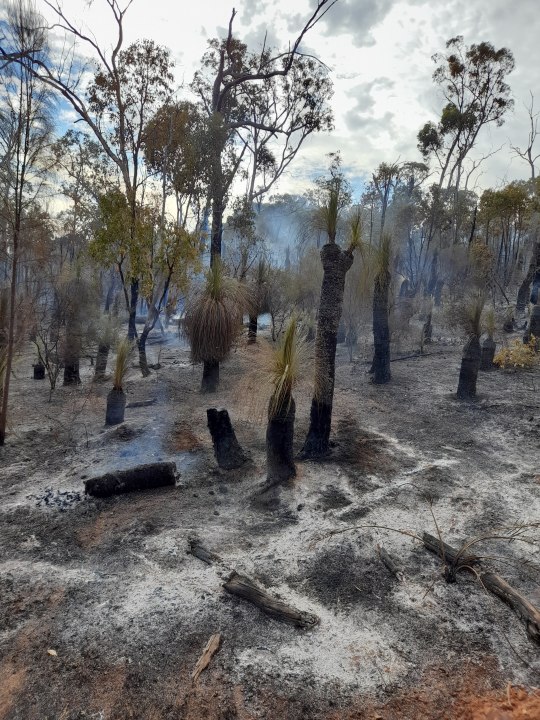
The fire

The regeneration - only 18 months later!
The lush green is the species Acacia pulchella, an obligate seeder, which is a plant that is killed by fire and must recruit via seeds - in this case, lying dormant in the soil seed bank. It requires high soil heating temperatures from fire (~80-120°C) to break dormancy and trigger germination. This strategy allows the species to persist in a fire prone environment, and take advantage of the excellent post-fire conditions of increased nutrients from burned biomass, increased light availability, and reduced competition.
#fire ecology#plants#ecology#fire#wildfire#bushfire#botany#australia#plant science#recovery#op#fire-ecology
181 notes
·
View notes
Photo
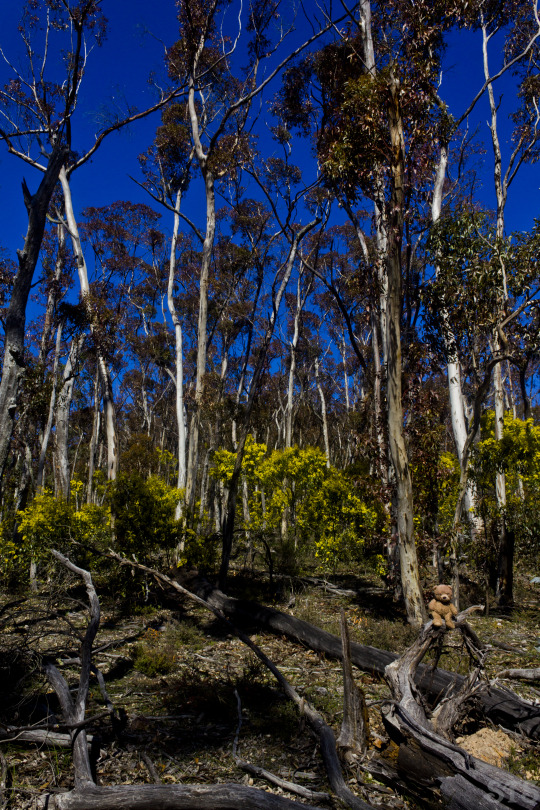

As Teddy moved through the burnt gums of a Australian forest he noticed the yellow of new growth against the otherwise browned landscape. The first steps, in this forest returning, being taken by Wattle right in front of his eyes.
#Teddy#Adventures with Teddy#photographers on tumblr#original photographers#australia#nature photography#Travel#nature#wattle#yellow#burn#wildfire#regrowth#photography#original#original post#Bear#Stuffed animal#stuffed bear#International Travel
44 notes
·
View notes
Photo

The 1974-75 Australian bushfire season was the worst on record, burning 15 % of the continent’s landmass
92 notes
·
View notes
Text
i have no more petition signing in me i need violent things to happen to those in power who keep allowing this to happen
#'this' can be interpreted almost however you want. the Palestinian Genocide/ other landback genocides. price gouging of covid boosters#the wildfires in canada/Australia. the genocide in the congo/sudan. oil executives in general. landlords as a concept.#ti talks#i need ppl more abled than me to beat every politician supporting the genocide with an aluminum bat to death. every one. yes even that one.#this is no longer a legal joke
2 notes
·
View notes
Text
youtube
Why misinformation about wildfires is spreading and how to combat it, June 17, 2023
As unprecedented wildfires continue to spread across parts of Canada, so does misinformation about them. Whatever the catalyst for any particular wildfire, the science clearly shows that climate change is making wildfire events more frequent and extreme, yet some media outlets and individuals are denying this reality for ideological and financial reasons, Michael Mann, director of Penn Center for Science, Sustainability and the Media, told CBC News.
CBC News
@allthecanadianpolitics
#misinformation#disinformation#climate change#wildfire#environment#climate crisis#climate emergency#Canada#USA#Australia#Penn Center for Science Sustainability and the Media#Michael Mann#media#corporations#science#climatology#education#drought#environmentalism#CBC#news#Youtube
2 notes
·
View notes
Text
youtube
"Climate change could make one in 25 Australian homes too expensive to insure in just eight years, according to Climate Council projections. Queensland and New South Wales are expected to be the hardest-hit states. Subscribe: http://ab.co/1svxLVE Read more here: https://ab.co/38NgEQk Environment reporter Michael Slezak has more."
#climate change#we want climate action now#jail climate criminals#qihou bianhua#cambio climático#klimawandel#klimakatastrophe#australia#floods#wildfires#insurance#uninsurable homes#Youtube
5 notes
·
View notes